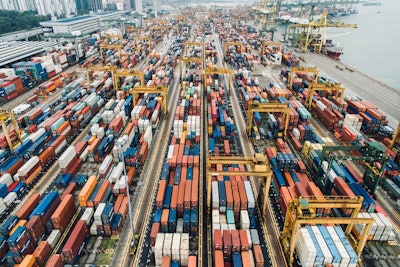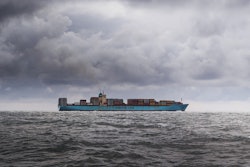
The landscape of the containerized grain export market has changed dramatically over the past 2 years. Demand for containerized grains has fallen, and destination markets have shifted.
According to the latesUSDA Grain Transportation Report, grain exporters are working with importers to grow current markets and expand to new markets where possible — all while navigating the everchanging ocean freight structure and costs.
Containerized grain exports have been slow throughout most of 2019, except for strong movements in January and April. Year-to-date (JanJul) shipments are 13% below last year and 2% lower than the 5-year average.
Soybeans remain the top commodity for containerized grain shipments, followed closely by dried distillers’ grains with solubles (DDGS).
Year over year, containerized soybeans increased to each of the top 10 destinations with the exception of Taiwan, where containerized soybeans fell more than 50 percent, a decrease that accounted for the majority of the overall 11-percent drop. By contrast, containerized DDGS shipments fell to many of the top 10 destination markets — notably, Vietnam, Thailand, and Taiwan. In some cases, the data suggest some markets may have shifted demand from DDGS to soybeans. Exporters report DDGS supply has been low this year owing to many idle ethanol plants in the Midwest.
整体集装箱谷物出口显示一些即时通讯pressive gains in traditionally smaller markets such as the Philippines, Burma, and Malaysia (see figure below).
Ocean Freight Market
Ocean freight rates for containerized movements from the Midwest to Shanghai, China, saw relatively dramatic changes through the first half of the year. These rate shifts were likely reactions to the tariff announcements and tariff delays that took place after the first of the year. Through the summer, rates slowly fell with a slight uptick in September.
Because of reportedly slow demand, rates are expected to continue to soften through the end of the year. However, in the months ahead, exporters will face two unknown challenges: (1) carriers’ choices on managing vessel capacity during the slow season, and (2) the impact of the International Maritime Organization’s vessel emissions restriction taking effect on January 1, 2020.
Carriers have two main strategies for managing vessel capacity, blank sailing and laying up ships.
Throughout 2019, carriers have used blank sailing extensively to manage overcapacity in the market. This practice allows carriers to limit capacity temporarily by either skipping a port along the set weekly route or skipping the entire route for a week.
This practice has become more common over the past few years, and is particularly attractive to carriers, but quite disruptive for exporters because often little notice is provided. Additionally, carriers will lay up vessels during the typical slow season, which occurs toward the end of one year and the beginning of the next year.
Laying up vessels is pulling vessels out of service for a period of time. This practice helps balance supply and demand but is costly for the carriers and is not sustainable for extended periods of time.
Finally, newly built vessels scheduled for delivery over the next few months will keep pressure on carriers to make efficient use of these costly assets. A relatively small percentage of the global vessel fleet is being pulled to be retrofitted with emissions scrubbers to meet the January 1, 2020, sulfur reduction mandate also known as IMO 2020.
It is still unknown what effect the IMO 2020 mandate will have on bunker fuel prices and ultimately the shippers’ overall freight rate.
In the fourth quarter, many carriers will purchase and burn compliant fuel in preparation for the January 1 deadline. In response, carriers have announced bunker fuel surcharges to compensate for an expected increase in fuel cost. With slow demand and immense pressure on vessel capacity management, however, it may be difficult for carriers to realize these rate increases in practice.
Contact:[email protected]





















